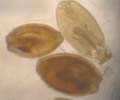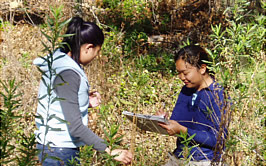 |
This
page describes three directions of research interest in which Jeff
Ihara seeks students to participate in semester-long research
internships: Project Emerita,
Project Donax, and Project
Transects.
|
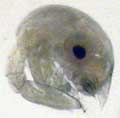
zoea larva of Emerita analoga. The
animal spends upwards of four months as zooplankton.
|
Project Emerita
Emerita analoga is the familiar "sand crab" found in abundance
on local sandy beaches throughout the summer months. |
megalops stage (below).
Just before settling, the crabs look more identifiable, sort of.

|

adult female with eggs (orange)
|
Besides just being fun things to
catch and watch during your days on the beach, these crustaceans are
great study organisms.
Among the various things you find if you cut one open are cystacanths
(below).
|
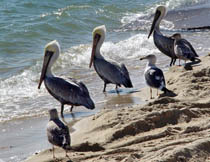
brown pelicans, various species of gull (above) along with other
shorebirds are on the "suspect list" as definitive hosts for the
acanthocephalan Profilicollis altmani.
|

surf scoters, a documented definitive host for the worms using sand
crabs as intermediate hosts
|
One of the open questions that
some of our student researchers have been investigating is the range of
bird species that serve as definitive host for the acanthocephalan
worms that use sand crabs as their intermediate hosts.
Published work seems to be divided on this issue, with about half
reporting that the surf scoter (near left) is the definitive
host. Others (particularly workers in South America) identify
instead other seabirds like gulls and pelicans (far left).
|
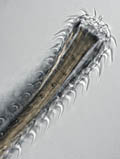
close up of the thorny head of a thorny-headed worm (Phylum
Acanthocephala)
|
Cystacanths (above) that you can find inside local sand crabs hatch out
when
the crab gets eaten by a predator, and they mature into acanthocephalan
worms, which are identifiable by their thorny heads (left).
|
|
Project Donax
Another sandy beach animal that is occasionally extremely abundant is
the bean clam Donax gouldii
(below).
|
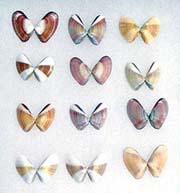 |
While sand crabs are around
pretty much every summer, the bean clam undergoes cycles of
superabundance and relative rarity (right is an Australian species--I
suspect the fluctuation is even more dramatic in D. gouldii)
|
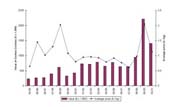
|
At least hypothetically, the
species could be entirely panmictic (genetically homogeneous), given
that the larval stages (below) can be carried by ocean currents great
distances.
|
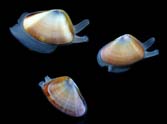
|
There are a fair number of open
questions for a motivated student to pursue with Donax. For example, to my
knowledge, no one has examined causes
or consequences of variation in shell coloration (left) or even the
genetic structure of the one-dimensional metapopulation along its
north-south cline. |
In the spring 2008 semester two
internship/HSP students, Russell Castiglione and William Aderholdt,
conducted a study on the retention of live E. coli cells in Donax. Their results have
implications for coliform monitoring (water quality) methodology, and
they will be presenting their work at an undergraduate research
conference in November 2008.
|
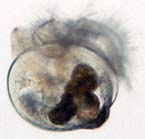
|
|
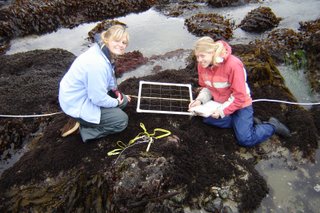
|
Project Transects
A third area of interest is the coordination and compilation of
ecological survey data collected by undergraduate teaching laboratories
throughout California. For relatively little additional effort,
the hard work of students in field ecology and marine biology classes
could gain the tremendous added value of access to long-term and
statewide data.
|
Students in coastal sage scrub
(above) and in the rocky intertidal (far left) recording data on
species composition and relative abundance.
|
|
|
This
page offers just an overview of research areas that are under
investigation by the internship and honors students in Jeff Ihara's lab
and a sampling of research opportunities available to MiraCosta
students that may complement their biology coursework and improve their
fitness for further research activities after transfering to the
university. Interested individuals should contact Jeff Ihara
directly at jihara@miracosta.edu.
|
|







